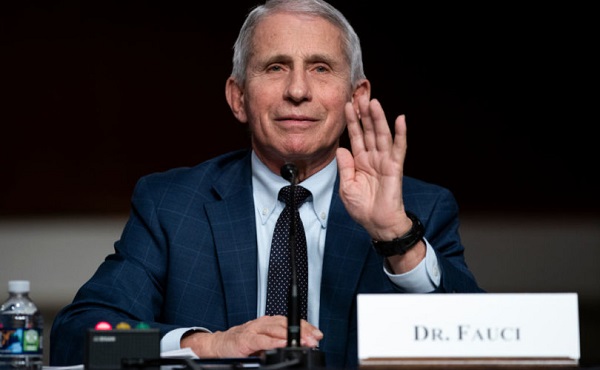Energy
World’s Most Populous Nation Has Put Solar Out To Pasture. Other Countries Should Follow Suit

 From the Daily Caller News Foundation
From the Daily Caller News Foundation
During his debate with former President Donald Trump, President Joe Biden claimed: “The only existential threat to humanity is climate change.” What if I told you that it is not climate change but climate policies that are the real existential threat to billions across our planet?
The allure of a green utopia masks the harsh realities of providing affordable and reliable electricity. Americans could soon wake up to a dystopian future if the proposed Net Zero and Build Back Better initiatives — both aimed at an illogical proliferation of unreliable renewables and a clamp down on dependable fossil fuels — are implemented.
Nowhere is this better reflected than in remote regions of India where solar panels — believed to provide clean and green energy — ultimately resulted in being used to construct cattle sheds.
The transformation of Dharnai in the state of Bihar into a “solar village” was marked by great enthusiasm and high expectations. Villagers were told the solar micro-grid would provide reliable electricity for agriculture, social activities and daily living. The promise engendered a naïve trust in a technology that has failed repeatedly around the world.
The news of this Greenpeace initiative quickly spread as international news media showcased it as a success story for “renewable” energy in a third world country. CNN International’s “Connect the World” said Dharnai’s micro-grid provided a continuous supply of electricity. For an unaware viewer sitting in, say, rural Kentucky, solar energy would have appeared to be making great strides as a dependable energy source.
But the Dharnai system would end up on the long list of grand solar failures.
“As soon as we got solar power connections, there were also warnings to not use high power electrical appliances like television, refrigerator, motor and others,” said a villager. “These conditions are not there if you use thermal power. Then what is the use of such a power? The solar energy tariff was also higher compared to thermal power.”
A village shopkeeper said: “But after three years, the batteries were exhausted and it was never repaired. … No one uses solar power anymore here.” Hopefully, the solar panels will last longer as shelter for cows.
Eventually, the village was connected to the main grid, which provided fully reliable coal-powered electricity at a third of the price of the solar power.
Dharnai is not an isolated case. Several other large-scale solar projects in rural India have had a similar fate. Writing for the publication Mongabay, Mainsh Kumar said: “Once (grid) electricity reaches unelectrified villages, the infrastructure and funds used in installation of such off-grid plants could prove futile.”
While green nonprofits and liberal mainstream media have the embarrassment of a ballyhooed solar project being converted to cattle shed, conventional energy sources like coal continue to power India’s over 1.3 billion people and the industries their economies depend on.
India saw a record jump in electricity demand this year, partly due to increased use of air conditioning units and other electrical appliances as more of the population achieved the financial wherewithal to afford them. During power shortages, coal often has come to the rescue. India allows its coal plants to increase coal stockpiles and import additional fuel without restrictions.
India will add more than 15 gigawatts in the year ending March 2025 (the most in nine years) and aims to add a total of 90 gigawatts of coal-fired capacity by 2032.
Energy reality is inescapable in a growing economy like India’s, and only sources such as coal, oil and natural gas can meet the demand. Fossil fuels can be counted on to supply the energy necessary for modern life, and “green” sources cannot.
India’s stance is to put economic growth ahead of any climate-based agenda to reduce the use of fossil fuels. This was reaffirmed when the country refused to set an earlier target for its net zero commitment, delaying it until 2070.
The story of Dharnai serves as a cautionary tale for the implementation of renewable energy projects in rural India, where pragmatism is the official choice over pie in the sky.
Vijay Jayaraj is a Research Associate at the CO2 Coalition, Arlington, Virginia. He holds a master’s degree in environmental sciences from the University of East Anglia, UK.
2025 Federal Election
Mark Carney Wants You to Forget He Clearly Opposes the Development and Export of Canada’s Natural Resources

From Energy Now
At COP26, Mark Carney also said that he thinks “we have both far far too many fossil fuels in the world” and “as much as half of oil reserves, proven oil reserves need to stay in the ground” climate goals.
Mark Carney claims that he supports Canada’s oil and gas industry and wants to see Canada export more of our natural resources. But Carney is yet again lying.
If Carney was sincere, he would immediately commit to the full repeal of the Liberals’ C-69, the ‘No More Pipelines’ Act, C-48, the West Coast Tanker Ban, and the production cap. Instead he doubled down on capping Canadian energy production.
But it’s not just that, Mark Carney has a clear history of opposing Canadian energy and infrastructure projects in favour of his radical anti-energy ideology and his goal of shutting down Canadian energy production.
However, while deliberately fighting against Canadian energy, this high flying hypocrite was having his company, Brookfield Asset Management, invest in some of the largest global pipeline projects in Brazil and the United Arab Emirates.
When asked by Conservative Party Leader Pierre Poilievre at an Industry Committee meeting, if he supported Justin Trudeau’s decision to veto the Northern Gateway pipeline, Mark Carney said “given both environmental and commercial reasons … I think it’s the right decision.”
Then, just six months later at COP26, Mark Carney also said that he thinks “we have both far far too many fossil fuels in the world” and “as much as half of oil reserves, proven oil reserves need to stay in the ground” climate goals.
If this wasn’t enough Mark Carney has now teamed up with Trudeau’s radical anti-energy ministers to finish off Canada’s energy sector, a goal that he has outlined while attending a World Economic Forum event in Davos.
Starting with the radical, self-proclaimed socialist, Steven Guilbeault, who’s history of anti-energy and infrastructure policies is all too familiar to Canadians.
Mark Carney has enabled Steven Guilbeault to do even more damage by promoting him to his Quebec Lieutenant, giving him three new ministerial responsibilities so he can continue his climate crusade against Canadian energy and infrastructure projects.
Canadians remember when Guilbeault said that “I disagree with the [Trans Mountain] pipeline” and that “Canada shouldn’t be investing in new infrastructure for fossil fuels.”
They also remember when he proudly proclaimed that “Our government has made the decision to stop investing in new road infrastructure.” All from a minister who shamed Canadians for owning cars.
Then there is the pipeline hating Jonathan Wilkinson, who Carney appointed as Canada’s Minister of Energy and Natural Resources. Recently, Wilkinson wrote a scathing letter to Canada’s energy leaders for their opposition to the Carney-Trudeau Liberals production cap on Canadian oil and gas.
Despite Canadian industries being subject to unjustified tariffs from the United States, Jonathan Wilkinson recently told reporters that “Everybody’s sort of running around saying, ‘Oh my God, we need a new pipeline, we need a new pipeline.’ The question is, well, why do we need a new pipeline?”
Finally, there is Carney’s new Minister of Environment and Climate Change Terry Duguid. Duguid has doubled down on Mark Carney’s climate radicalism by stating that “a Mark Carney government will maintain the cap on emissions from the production of oil and gas”.
From 2015 to 2021 Carney-Trudeau environmental and anti-industry policies have cancelled over $176 billion in Canadian energy projects, with many more being cancelled afterwards. That means $176 billion worth of jobs and powerful paycheques have been blocked from Canadians so Mark Carney and his Ministers can impose their radical net zero ideology.
2025 Federal Election
Canada’s pipeline builders ready to get to work

From the Canadian Energy Centre
“We’re focusing on the opportunity that Canada has, perhaps even the obligation”
It was not a call he wanted to make.
In October 2017, Kevin O’Donnell, then chief financial officer of Nisku, Alta.-based Banister Pipelines, got final word that the $16-billion Energy East pipeline was cancelled.
It was his job to pass the news down the line to reach workers who were already in the field.
“We had a crew that was working along the current TC Energy line that was ready for conversion up in Thunder Bay,” said O’Donnell, who is now executive director of the Mississauga, Ont.-based Pipe Line Contractors Association of Canada (PLCAC).
“I took the call, and they said abandon right now. Button up and abandon right now.
“It was truly surreal. It’s tough to tell your foreman, who then tells their lead hands and then you inform the unions that those three or four or five million man-hours that you expected are not going to come to fruition,” he said.

Workers guide a piece of pipe along the Trans Mountain expansion route. Photograph courtesy Trans Mountain Corporation
“They’ve got to find lesser-paying jobs where they’re not honing their craft in the pipeline sector. You’re not making the money; you’re not getting the health and dental coverage that you were getting before.”
O’Donnell estimates that PLCAC represents about 500,000 workers across Canada through the unions it works with.
With the recent completion of the Trans Mountain expansion and Coastal GasLink pipelines – and no big projects like them coming on the books – many are once again out of a job, he said.
It’s frustrating given that this could be what he called a “golden age” for building major energy infrastructure in Canada.
Together, more than 62,000 people were hired to build the Trans Mountain expansion and Coastal GasLink projects, according to company reports.
O’Donnell is particularly interested in a project like Energy East, which would link oil produced in Alberta to consumers in Eastern and Atlantic Canada, then international markets in the offshore beyond.
“I think Energy East or something similar has to happen for millions of reasons,” he said.
“The world’s demanding it. We’ve got the craft [workers], we’ve got the iron ore and we’ve got the steel. We’re talking about a nation where the workers in every province could benefit. They’re ready to build it.”

The “Golden Weld” marked mechanical completion of construction of the Trans Mountain Expansion Project on April 11, 2024. Photo courtesy Trans Mountain Corporation
That eagerness is shared by the Progressive Contractors Association of Canada (PCA), which represents about 170 construction and maintenance employers across the country.
The PCA’s newly launched “Let’s Get Building” advocacy campaign urges all parties in the Canadian federal election run to focus on getting major projects built.
“We’re focusing on the opportunity that Canada has, perhaps even the obligation,” said PCA chief executive Paul de Jong.
“Most of the companies are quite busy irrespective of the pipeline issue right now. But looking at the long term, there’s predictability and long-term strategy that they see missing.”
Top of mind is Ottawa’s Impact Assessment Act (IAA), he said, the federal law that assesses major national projects like pipelines and highways.
In 2023, the Supreme Court of Canada found that the IAA broke the rules of the Canadian constitution.
The court found unconstitutional components including federal overreach into the decision of whether a project requires an impact assessment and whether a project gets final approval to proceed.
Ottawa amended the act in the spring of 2024, but Alberta’s government found the changes didn’t fix the issues and in November launched a new legal challenge against it.
“We’d like to see the next federal administration substantially revisit the Impact Assessment Act,” de Jong said.
“The sooner these nation-building projects get underway, the sooner Canadians reap the rewards through new trading partnerships, good jobs and a more stable economy.”
-

 2025 Federal Election2 days ago
2025 Federal Election2 days agoBREAKING: THE FEDERAL BRIEF THAT SHOULD SINK CARNEY
-

 2025 Federal Election2 days ago
2025 Federal Election2 days agoCHINESE ELECTION THREAT WARNING: Conservative Candidate Joe Tay Paused Public Campaign
-

 2025 Federal Election2 days ago
2025 Federal Election2 days agoOttawa Confirms China interfering with 2025 federal election: Beijing Seeks to Block Joe Tay’s Election
-

 2025 Federal Election2 days ago
2025 Federal Election2 days agoReal Homes vs. Modular Shoeboxes: The Housing Battle Between Poilievre and Carney
-

 2025 Federal Election22 hours ago
2025 Federal Election22 hours agoMark Carney Wants You to Forget He Clearly Opposes the Development and Export of Canada’s Natural Resources
-

 International15 hours ago
International15 hours agoPope Francis’ body on display at the Vatican until Friday
-

 Business1 day ago
Business1 day agoHudson’s Bay Bid Raises Red Flags Over Foreign Influence
-

 2025 Federal Election23 hours ago
2025 Federal Election23 hours agoCanada’s pipeline builders ready to get to work

